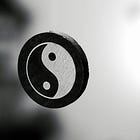The Two Modes of Knowledge: Rationality and Intuition
Fritjof Capra, “The Tao of Physics: An Exploration of the Parallels Between Modern Physics and Eastern Mysticism” (1975) #3
In this post, we will continue our exploration of Fritjof Capra’s The Tao of Physics: An Exploration of the Parallels Between Modern Physics and Eastern Mysticism (1975).
To access the previous ones, simply click the links below.
In this third post, we will explore one of the most difficult questions that Capra addresses: how is it possible to compare modern science and mysticism?
It is widely accepted that the most fundamental criterion of modern science is exactness. Science should produce reliable results that reflect reality. By contrast, mysticism is generally excluded from scientific inquiry due to its alleged irrationality. This is the common perception of science and mysticism held by many.
Moreover, science uses a “highly sophisticated language” based on “modern mathematics,” often taken to be the mode of expression of science itself. By contrast, spiritual approaches — which Capra views as rooted in meditation practices — traditionally assert that the experiences they offer, particularly mystical experiences, cannot be “communicated verbally” (Capra 1975, 26).
He explains:
What we want to compare are the statements made by scientists and Eastern mystics about their knowledge of the world. To establish the proper framework for this comparison, we must firstly ask ourselves what kind of ‘knowledge’ we are talking about; does the Buddhist monk from Angkor Wat or Kyoto mean the same thing by ‘knowledge’ as the physicist from Oxford or Berkeley? Secondly, what kind of statements are we going to compare? What are we going to select from the experimental data, equations and theories on the one side, and from the religious scriptures, ancient myths, or philosophical treatises on the other? This chapter is intended to clarify these two points: the nature of the knowledge involved and the language in which this knowledge is expressed. (Capra 1975, 26, my emphasis)
According to Capra, two kinds of knowledge, or modes of consciousness, have been acknowledged throughout history: “the rational” (associated with science) and “the intuitive” (associated with religion). He argues that in the West, the intuitive mode has been devalued in favor of the rational, whereas in the traditional Eastern attitude, it is the opposite: the intuitive mode is valued and the rational mode is devalued.
This distinction by Capra between the rational West and the intuitive East quickly proves to be problematic. In the West, Henri Poincaré, for instance — one of the greatest mathematicians — argued that discovery depends on sudden insight. For him, “intuition” is not the enemy of reason but a condition of creative scientific work.
Meanwhile, Indian logic provides a counterexample to the notion that Eastern cultures undervalue reason. The Nyāya school, and especially the Navya-Nyāya school, developed highly technical theories of inference, definition, and debate for evaluating arguments. These traditions demonstrate that rationality has been central to Indian philosophy.
Together, Poincaré’s work and Indian logic demonstrate that intuition and rational analysis are cultivated on both sides. However, Capra’s goal here was not to present a completely accurate and exhaustive account, but rather to propose a general understanding of the differences between Eastern and Western conceptions.
Keep reading with a 7-day free trial
Subscribe to Philosophy and Beyond to keep reading this post and get 7 days of free access to the full post archives.




